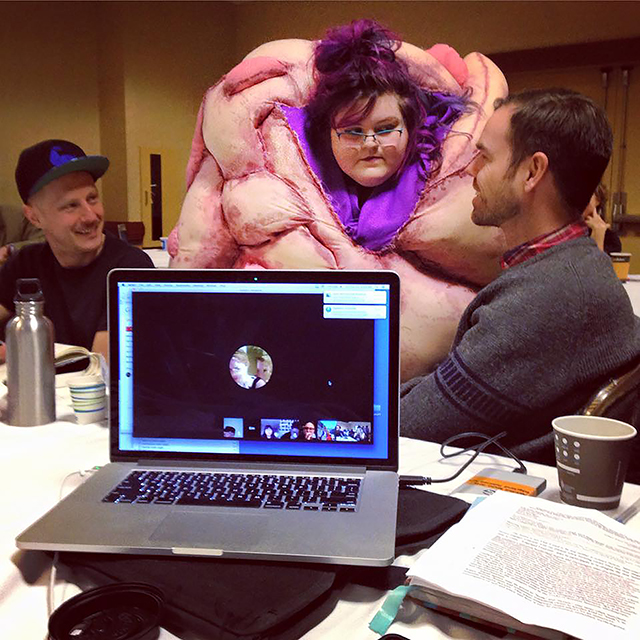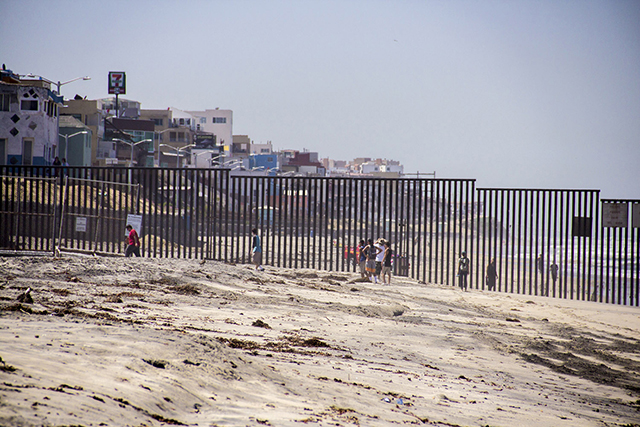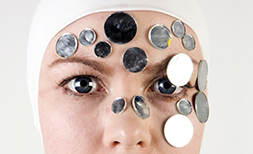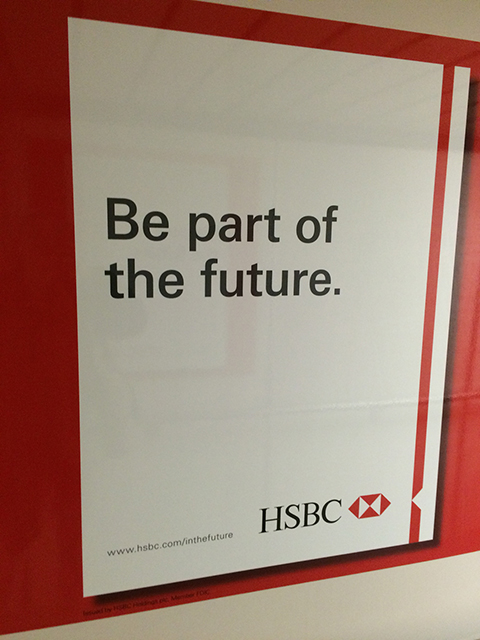Stephanie Tripp, Deputy Executive Editor of Media-N, discussed the process of programming the Media Lounge with event committee members Elizabeth Demaray, Darren Douglas Floyd, and Christina Freeman, and with session organizers Liss LaFleur and Ash Eliza Smith. The discussion took place over a lunch meeting during the CAA conference in New York and via a series of follow-up emails among the group.
A video channel featuring work from the Media Lounge is available at https://vimeo.com/channels/870573/
Stephanie Tripp: What was the process like for deciding how to program the Media Lounge for a day?
Elizabeth Demaray: [During a conference call for NMC board members] we had some discussion in which the board was trying to decide what to do with this space. I don’t exactly know who, but somebody on that call suggested that it should be very open-ended, that we should kick it out to the membership of the NMC and see what kinds of emergent ideas came up because everybody was interested in doing something that was super unusual, collaborative, creative, and would involve interaction in that space. So, it was this very open-ended idea, and it was interesting because none of us really know who it was who threw that out, but by the next phone call that person wasn’t on it, which left me to attempt to describe to [other members of the Exhibitions & Events committee] as best as I could what the original intent or thought or idea had been.
Darren Douglas Floyd: I got a call from the chair of Exhibitions & Events, Joyce Rudinsky. The charge from the NMC board was, “Here is our open call, and we would like you to chair the process of selecting these.” [Elizabeth Demaray and Christina Freeman] were the only two who showed up on the conference call with me. [ . . .] So it was funny because we all kind of came to it in a way that we were all responsible for this idea that, in principle, I think we all agreed with, but none of us felt it was our idea. So, I think what that meant was that none of us had an agenda that we were trying to drive or a particular role we wanted to play. We were like, “Let’s see what comes in.” We didn’t get, as I recall, but 15 or 20 proposals.
It was a very strange call that didn’t say, hey, send us your paper for inclusion on this topic. It was like, “Give us ideas for how you might propose to respond to the theme of alternative economies.”
ED: I have to say that it was probably the most open-ended call I’ve ever seen. I believe we asked for “ideas.”
Ash Eliza Smith: On the applicants’ side I think it’s a little frightening when you see calls like that. Part of me, the utopic part of me, was like, “That’s amazing! It’s so open!” But then the other part is like, “Hmmm, are they just farming?”
ED: That was actually my concern when it went out, that people would read that and think, “This doesn’t give me any direction on how to respond.”
DDF: I was attracted to Ash’s proposal in particular because it was just like a sheet of ideas. There were several ideas and they were connected, and it wasn’t like super tight or very clear exactly what the presentation would be about, but the ideas were there in a way that I felt like, “Okay, this is something that can expand into this space.”
ED: And every one of her proposals was interesting. It’s like she gave us this menu of such good options that we actually spent some time considering the different possible directions that we could go with each of her proposals.
DDF: It was Elizabeth who saw the two coalescing groups.
ED: We pulled out the proposals that looked good, and then we asked ourselves, “What are these ideas coalescing around?” It seemed that they could be going into these two topic areas, which in turn became the two sessions.
DDF: One thing that was curious about that is that there was a gender split, in that all the proposals in one session were made by female presenters, and all in the other session were male. And the other strange thing is that all the proposals for one were potentially kind of radical in terms of their approach to the concept of alternative economies, like they were almost an attempt to blow that idea up and get a new topic, and in a way of addressing it that is not considered conventional. The other [session proposal] was pretty direct, like, “Oh, Alternative Economies, here’s an example.” So they came as two separate monsters.
ST: The theme of Alternative Economies was something already attached to the space before NMC became involved, right?
DDF: It was actually proposed by my committee, CAA’s Services to Artists. So Mat Rappaport and I are actually on both sides of this. We’re both on Services to Artists, and that CAA committee manages all four days of the Media Lounge. One of our members, Jenny Marketou, had selected that for the whole overarching theme for her programming, and then we – really it was Mat who did the work – were able to get her to agree to give us a day. But part of the agreement was that we not do something totally different from what she had already programmed. So that was another one of those givens that we had to contend with.
ST: It’s interesting to think about the idea of constraints. You had an odd mix of constraint and freedom, right? How did you manage that? How do you think that those two things blending together turned out?
Christina Freeman: I was really excited to see what happened with the morning session because that was the one that I felt less comfortable with. The other one was much more defined and familiar for me. And I’ve learned so much from this experience because that open-endedness allowed for so many artists to be involved and so many conversations to happen that felt really big, like conversations of futurist discussions, gender identity issues, and even issues of presentation, like the Transient Exhibition, things outside of the gallery space, things in all these different modes were happening, whereas in the afternoon we kind of got what we expected and it was more under control. You know, the morning session could have been a disaster, but it was awesome. There was more of a risk involved, but I think more came out of it for that reason.

M.C.U. (Mobile Censorship Unit) at Disrupting Bodies, Disrupting Narratives event, 2015, Chris Wille, ©Ash Eliza Smith. (Used with permission.)
DDF: I remember us having a conversation at one time about what we wanted out of it. As organizers, curators of this thing, what were we trying to do? And my point of view was that I wanted the people we’ve selected to do whatever the hell they want to do, to have a great experience, and to feel supported, because, ultimately, we’ve asked them to do this insane thing. So, the way it worked out is that, once we had Liss LaFleur and Ash Eliza Smith on board, we had this conference call and asked them what they wanted to do. Do you want to have a second open call? Do you want to curate works in? How do you want to handle filling out the space and fleshing out this conversation? And that’s when Ash and Liss’s voice started to emerge uniquely from ours.
AES: That was really exciting for me. Obviously, everyone knows open calls are a lot of work, but it made me excited to think about making connections. Liss and I just looked at all of the themes that we were really interested in talking about and tried to distill what is going through all of our projects, all of our interests, and this idea of disrupting narratives, disrupting bodies also felt very true to alternative economies. So we did the open call from that. Liss and I did spend quite a lot of time crafting that call and the language, so it might have been the way that we framed it, but we got so many submissions. It was crazy.
DDF: The New Media Caucus was amazed. We had 120 artists proposing 150 some works, and we were overwhelmed. I was assuming we were going to get 20. But really Liss and Ash were the ones who made sure they looked through every word.
ED: I think Ash and Liss are perhaps the most generous individuals that I have ever seen jury anything. Not only did they look at the works that people sent in, but they went to the artists’ web sites, they read their texts, they looked at the artist’s other, non-submitted works. They even selected some non-submitted art. And there was something else about it. [For example, during a conference call with the session organizers], I swear to God, I heard one of them say to the other one, “Well the visual work isn’t that strong, but I really like the ideas, so let’s just have that person come and talk about their work.” And I just remember thinking that, in relationship to curating visual art, an exhibition of ideas, is a wonderful concept.
Liss LaFleur: Ash and I are on different coasts, so we made a spreadsheet where we compiled all of our top choices and would meet (virtually) to discuss them and make final decisions.
ST: What sort of connections among the works emerged during the morning session?
ED: The aspect of shown work that I found most surprising – and I’m a sculptor, so I think about objects a lot – is that there are so many connections between those pieces. [Chris Wille’s M.C.U. ], a VR helmet you put on that actually produces static and it blinds you when it doesn’t want you to see things. And there’s [Kristin Stransky’s] titscape. It’s almost as though titscape and [Kaitlyn Hunter’s] Cacomorphobia could have just morphed. To just put the sound [of talking breasts from titscape into the large padded suit from Cacomorphobia] and you could just squeeze it.

titscape at Disrupting Bodies, Disrupting Narratives event, 20154, Kristin Stransky, © Ash Eliza Smith. (Used with permission.)

Kaitlyn Hunter performing Cacomorphobia, 2015, Kaitlyn Hunter, performance, © Liss LaFleur. (Used with permission.)
AES: It’s as if someone were to start touching the suit and it would say something like, “Can you take your hands off me?”
ED: And the standpipes going into each other in [Paul Taylor’s] Anonymous Infrastructures. It was just kind of extraordinary to see the similarities between these works.
ST: Does anyone want to talk about the way some of the artists work with space – how it gets negotiated or distributed – in regard to the idea of alternative economies?
AES: Well, my work is all about space. [In work such as Biotech Beach], I’m thinking about it in terms of geopolitical, militarized, about how it’s shaping a lot of the research that’s happening. I think of Anonymous Infrastructures. I was really drawn to that because I think there’s an economy of humor in a lot of the work. But Paul’s work is also talking about space and how it shapes us, how we shape it.
ST: In some of these works, such as Kean O’Brien’s Transient Exhibition, we can see the ways that space is marked by movement and how traversing something can be a way of transforming it.
AES: I’m thinking about Hollywood and [Transient Exhibition] being carted around Hollywood.
CF: It brings up issues of access, and whether or not it was permitted, and of inhabiting, co-opting.
ST: The work also opens up other issues of marked space, such as the idea of curation and the artist’s own troubled role as both a curator and an art maker.
LL: This also ties into the two screenings we had in the session with VisualAIDS. Artists negotiating conversations between past and present spaces, and controlling the physical space in the narrative using robotics like in 7 Years Later by Glen Fogel.
ED: I’m thinking of the presenter who made the vehicle in India, Carrie Fonder. Supporting those kinds of connections in that kind of space is just extraordinary.
ST: Then there was Erin Gee’s piece.
ED: This morning, I was sitting on my couch and trying to remember how she did that.
AES: It was facial recognition – emotion.
DDF: It also was sensing other things about them, too: heart rate, respiration.
AES: Which Elle Mehrmand’s piece is also using, in terms of how she controlled how many of herself would get cloned. How many people were in this space, how much heat would be produced from their bodies, which would then change her brain waves, which would then change the clones.

Fauxlographic, 2011, Elle Mehrmand, digital still from video, © Elle Mehrmand. (Used with permission.)
ED: I’ve been thinking about the notion of hacking [in relation to the morning session’s presentations]. It’s not the sort of classical Western notion of self and other. It’s this notion of another system, hacking into another system. There was something about this work, and maybe it comes right back to transitioning between narratives, bodies and boundaries, but this work seemed to indicate a greater level of comfort with going into or becoming the other. There’s not a dichotomy here. But there is this comfort with simply being part of something that becomes something else.
AES: Well, I think it touches on two things. I brought up this idea a lot of being the researcher and being the researched. But also anthropophagy – literally eating the other so it becomes a part of you and you don’t even realize that division anymore.
ED: It becomes part of yourself. There’s something else happening there that’s different from this [more generally understood] idea of hacking – which is wonderful and empowering – but it’s something else.
AES: That also implies this notion of the progressive state, that you’re never necessarily in this, but it’s always a progression. You’re always attempting to define what your shared term is.
ST: The theme of transitioning between narratives, bodies, and boundaries was evident throughout the morning session and shaped much of the discussion, but we also had a very strong discussion about the border crossing in California and the multiple invocations of futurism in various contexts. So, what were some of the other connections or conversations that emerged? And how did they get woven together?
AES: One piece we haven’t talked about, but that relates to so many of these things, is [ . . . ] Jeremiah Jones’ The Information, [which speaks] of this kind of economy of living in a Walmart parking lot for those who are waiting to work in North Dakota’s fracking industry.

The Information, 2014, Jeremiah Jones, digital still from video, © Jeremiah Jones. (Used with permission.)
DDF: I was interested in the Jeremiah Jones film [first] because of the way it’s made. I come from film, so this idea of making a film completely from outsourced material is an interesting ‘film thing’ happening right now. So, formally I was interested in it, but also in this way that it explores masculinity. It’s like the subject without it being the stated subject that was interesting.
AES: And [the subjects] self-performed, the whole . . .
DDF: Yes. And the thing I really connected to was the way the delusional narratives they composed really is what masculinity is comprised of. We tell ourselves these stories about success, or whatever.
AES: Which totally ties into my issues with futures thinking right now and it being co-opted as the buzz advertisement of future success.
ST: What are your thoughts on the afternoon session? What sort of connections do you see between it and the morning session?
CF: I thought the work of Tyler Stefanich probably connected the most. His open-source software discussions for artists and this anarchist hacker idea of creating something for free that they share that then disrupts an already-existing system.
DDF: I like the idea of that model, which is familiar to me, then being drawn in direct relation to the idea of the artist collective, which also is familiar but I had never really considered them as one, as like an evolution of the other. That was exciting.
ED: The game playing [in the afternoon session] – I just thought it was beautiful. Suddenly it was game-play time. All of these people showed up with their laptops and they all opened their laptops. And I wondered, who are these people? Then I realized it’s the gaming people. Then they started moving around. I looked at Darren, and I said, “This is great! We don’t have to do anything to activate this space.” A really nice kind of calming activity entered the room.
ST: Were there any surprises during the day? If so, what were they?
DDF: I think the surprise for me is how much I had to say. I became very interested in details and connections between works.
CF: I think the thing that surprised me the most was how seeing all the faces up on the Google chat and seeing those artists who were not in the room together wanting to connect with each other. That felt really powerful, as in, “We have our own thing going on and we have all these different themes that we care about.” How can we get to this point where we’re empowering people that have these values that are shared and where we can do something more rebellious or more revolutionary against these larger structures that are controlling our language, the way we live, our economy, and things like that?
ST: Is there anything that hasn’t already been discussed that you want to bring up about this experience?
CF: I definitely want to continue a conversation, and I like that we made the video channel a continuum, a record of what happened, and I hope that those artists that we spoke with on Google chats keep in touch with each other.
DDF: Part of what interested me about this first session in particular is that I actually think it provides a vital service to artists at CAA. In part because of the way it worked out during the secondary open call, those artists we ended up including are artists who were just enthusiastic and grateful about being included. They wanted to be in the conversation, and, of course, it’s good for them to have their work shown somewhere and be part of a conversation. But, to me, that’s actually a service that the Media Lounge can provide. But it takes courage on the part of our presenters, who are putting themselves on the line and, rather than select artists who no one will question because they are already established, they bring in these voices that maybe at a public level are not known.
AES: Also, just in terms of other panels that I’ve attended or been on, the kind of informal economy of how a lot of people talked I thought was really useful. It’s one thing to be in an MFA program and learn how to read your paper and be able to speak a certain way about your work, but I think that [during the artists’ presentations] there was a very real-world-ness to the way people talk.
ED: There was a poignancy, like everybody’s on the same page. And all of the work was so poignant. It was just so immediate, and heart-felt, and present.
DDF: I think a lot of that was due to Ash. In the days prior, Ash emailed each of the artists and specifically said to them, “This thing about your work interested me. Please be ready to make this connection.” As I told her, this was an enormous amount of work and incredibly generous.
ED: That’s the job of a really good curator, right?
AES: And that would be one future hope/dream. I would love to turn this into some kind of physicalized form. An exhibition.
DDF: One of the things that was gratifying for me is that many people walked by and dropped in who just said it’s such a relief to witness a conversation amongst artists about art. All these indefinable shifting territories. Complex, difficult, confusing. What’s happening in these other, really ordered spaces just doesn’t feel that way.







